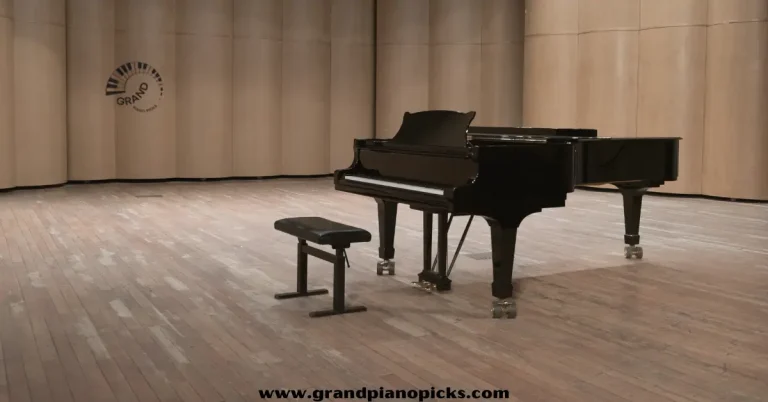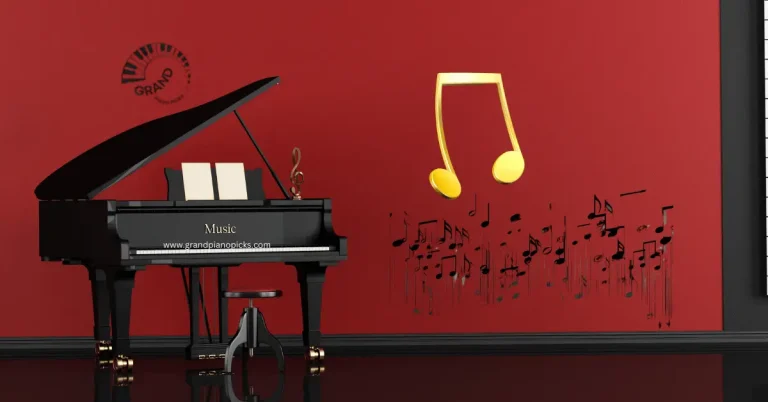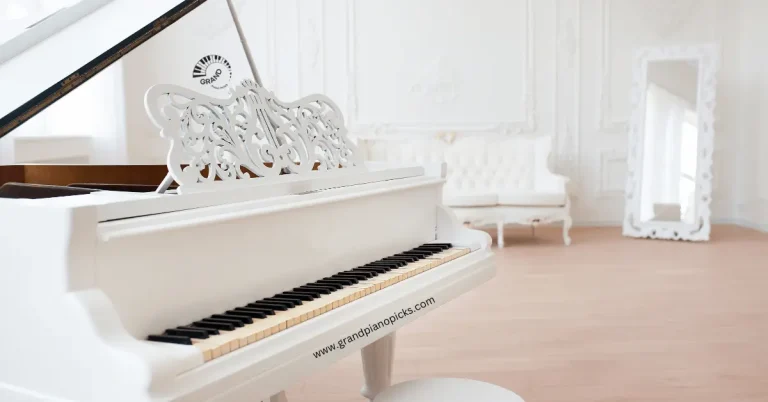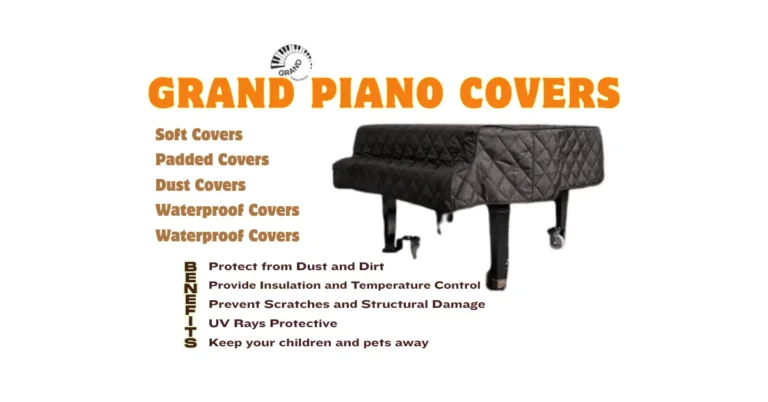Secrets of Grand Piano Strings | Composition, Care Tips, and Longevity Tricks
Have you ever noticed what makes grand piano strings rich in their resonance sound?
Obviously, the materials, tone, tension, and length bring advancements to the sound of grand piano strings. All the essentials make a grand piano capable of being a favorite among the music founders and pianists.
The grand pianos are long and horizontal in shape. They produce the overall finer tones. Strings, as a part of grand pianos, produce rich, aesthetic, and unique sounds.
Piano strings play a fundamental role in producing sound. The pitch of sound varies as it depends upon the composition. The thinner strings produce a higher pitch of sound. They come in different shapes and sizes.
It is common among many of the grand piano owners to try to understand why their pianos do not support them as long-term and sustainable pianos.
In this guide, we will uncover the hidden secrets of grand piano strings, what they are made of, interesting facts and myths, and how to make your piano strings in top condition.
Material, types, and Composition of grand piano strings
Grand piano strings are composed of high-carbon steel and copper.
The grand piano strings consist of two types:
Treble strings and bass strings.
They are not just wires; they are designed with the abilities of strength, flexibility, and longevity.
Treble and Middle Strings: High Steel Carbon
- Treble strings are made up of high-carbon steel. They produce a higher-pitched sound. They are also called higher-pitched strings. The treble strings pitched down to the middle-range strings when struck with the higher tension of treble strings.
- The high-tensile steel allows the piano to withstand harder tension. It still gives a resonant sound. The treble and mid-piano strings use three steel strings per note. They are thinner but strong enough to withstand a stretched tension. They do not snap easily. The thinner the strings, the higher the pitch.
- The high-tensile carbon steel is well known for its sturdiness. It brings flexibility and richness in sound and makes the strings able to produce unique, aesthetic, and resonant sounds. Steel is hard-wearing and prevents the strings from rusting.
Bass Strings: Copper Wound
- These strings are made up of steel cores and are wound with copper. They use three to one string per note. The number of strings per note decreases, firstly from three to two and then to one, as the bass strings produce lower-pitched notes. That’s why the bass strings are also known as lower-pitched strings.
- The bass strings are wrapped either with a single wound or with a double wrap. This winding provides mass that exclusively stiffens it and softly touches the piano, enabling it to produce a soft and unique sound. In bass strings, the lower pitch is like that of the lower pitch of a guitar. The notes come from lower pitch to high pitch.
- Bass pianos have a lower pitch; they are thin, and they double the mass. High steel is the main material used in almost all projects. They produce flexibility, sturdiness, and longevity. Ensure that the top condition of the notes is in good condition, depending on how you care for them.
Why Are These Materials Used?
- High-carbon steel is well known for its sturdiness, flexibility, and wear resistance. It is a hard metal. It provides strength to the strings that prevents them from breaking easily. Its hard material is so useful that if you transport your piano, it provides high tension in length.
- Copper is well known for its resistance to damage. It gains priority against carbon steel. It provides durability and longevity to strings and protects them from being damaged and rust-free.
Fun Fact :
The number of strings in a grand piano varies from model to model and depends upon the designer. But the standard piano contains around 230 to 240 strings.
Interesting Facts and Myths About Grand Piano Strings
The grand piano strings have some interesting facts and features, and some people add some myths about them. These myths are totally false.
Fun Facts
- The grand piano strings are made up of high-carbon steel and copper.
- They need higher tension to produce a unique, aesthetic, and resonant sound.
- They do not snap easily, even in older conditions, if they are properly cared for.
- The older pianos can still create amazing sounds because they are properly tuned and cared for.
- The thinner the strings, the higher the pitch and the more unique the sound produced.
Myths
- Some people believe that the strings are made up of catgut, which is animal intestines. It is totally false; piano strings are made up of high-carbon steel and copper. The violins in the older era were made up of such materials.
- The piano strings become weak when it is tuned. Tuning is necessary for maintaining proper tension, so this myth is wrong.
- The strings can break if we tune regularly. The running cannot break the strings if the proper care and maintenance are done.
10 Tips and Tricks to Keep the Piano Strings in Top Condition and Long-Lasting
The stability and maneuverability of a product depend on how much we care for it. To make your piano strings in optimal condition and to produce soft and unique sounds, our guide will help you so that your piano strings support you as long-term piano strings.
1. Tune Regularly
- Regular tuning is necessary to produce tension in a pitch. Tuning allows the strings to become strong enough not to break while playing.
- Tuning twice a year can bring modernity to your grand piano strings.
2. Avoid touching with dusty hands
- Do not touch the strings when you have dust on your hands. Dust can make your string frame rough and dusty.
- Avoid touching it while with oily hands.
- The wet hands can damage the string frame and can make it useless.
3. Clean Strings With a Soft Cloth
- Use soft foam or fabric to keep your strings dust-free.
- Do not wear heavy clothes or wet clothes.
4. Avoid the Use of Harsh Chemicals
- The harsh chemicals have damaged products in them. The use of such chemicals directly makes your strings useless.
- In case of rust, avoid using such chemicals; they can cause more damage.
5. Do not leave piano strings in bad weather conditions
- Always protect your piano from sunlight. Direct exposure to the sun can wear out the color and polish.
- Do not leave your piano in the car for a long time. The tension can be reduced, and the sound quality will be affected.
- Also, to protect it from rain, which will damage the string’s material.
6. Control humidity level
- The normal level for humidity is 3 to 6.
- If the humidity in a room with a piano is less than three or greater than 6, then the danger of strings being rusted increases.
7. Check for replacement
- The treble strings ‘ lifespan is long-lasting but not forever. They do not need a replacement.
- Bass strings do not support as long as treble strings. When there is a need for replacement in bass strings, their sound becomes dull and heavy.
8. Always Prefer High-Quality Strings
- The quality of strings depends upon the material used in their composition.
- Always choose high-quality carbon steel and copper winding.
9. Contact with a Professional Technician
- You cannot replace the bass strings until you have learned about them.
- Hire or contract with a technical pianist or professional to maintain the tension and replacement.
10. Protect from Sudden Changes in Temperatures
- The sudden change in temperature can bring rust to your strings.
- The warm condition can damage the frame.
- The looseness in strings is also due to sudden changes.
Fun Fact: The proper care and maintenance of the grand piano strings can enhance the lifespan of piano strings. If piano strings are properly cared for, they will support you for 50 to 100 years.
If you’re looking that how top grand pianos bring their strings to life, you need to look at the elegance of the Yamaha C1 baby grand piano and the timeless beauty of the Sohmer Grand Piano — both showcase the beauty behind every note.
FAQs
Can older pianos create a unique sound?
Yes, older pianos can create unique, aesthetic, and amazing sounds if they are properly cared for, maintained, and tuned regularly.
How many strings does a grand piano have?
The number of strings varies, depending on the designer. But a standard grand piano consists of around 230 strings.
How long do grand piano strings last?
The grand piano strings do not last forever, but their lifespan is built over decades.
What are grand piano strings made of?
Grand piano strings are made up of high-tensile steel, carbon, and copper winding.
What is the tension of grand piano strings?
The tension is necessary for the pitch. Usually, the tension of a string is 10 to 20 tons.
What is the best method to play the grand piano strings?
It is useful for compressing the strings softly. Hardly and forcefully playing can loosen the strings.






